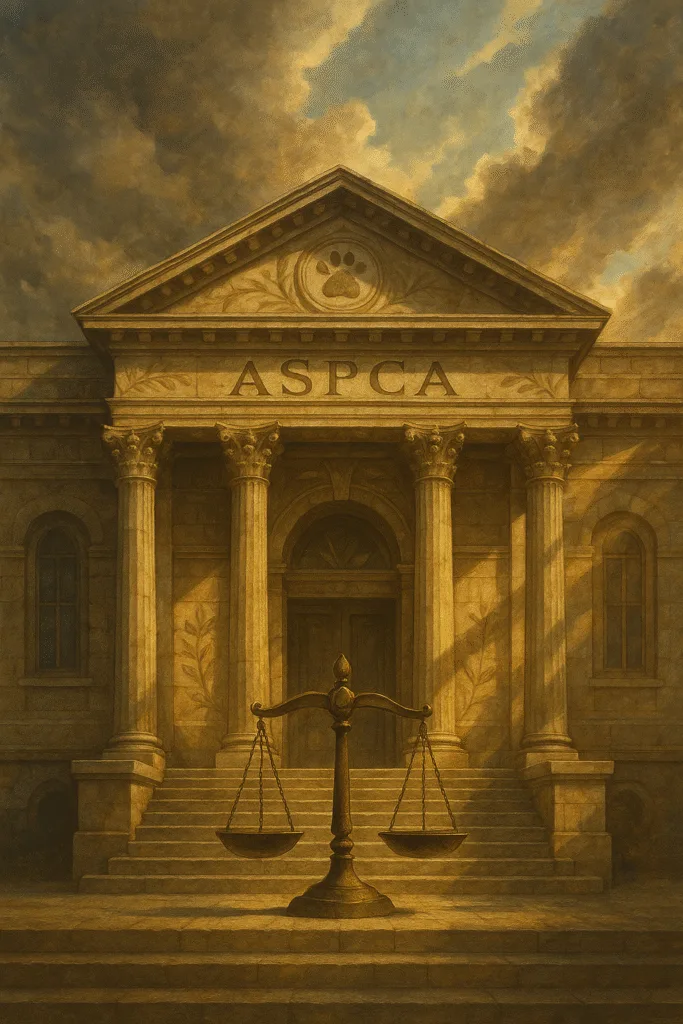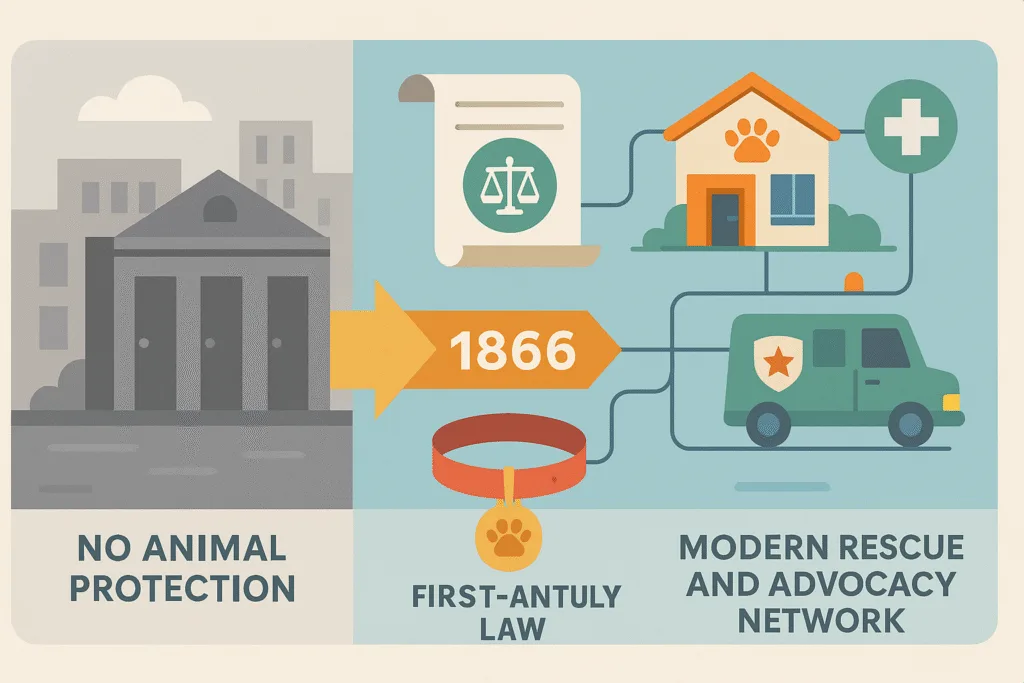
What Is the ASPCA and Why Was It Created?
The ASPCA (American Society for the Prevention of Cruelty to Animals) is the first animal welfare organization in the United States. Founded in 1866 by Henry Bergh, its original mission was to stop widespread cruelty to animals at a time when no laws or systems existed to protect them. This nonprofit didn’t just raise awareness—it helped pass the very first anti-cruelty law in the country and received legal authority to enforce it. That milestone marked the beginning of institutionalized animal protection in the U.S.
The ASPCA is now a national leader in rescue, veterinary care, adoption, and legislative advocacy. Its work touches everything from emergency pet response to systemic reform in farming, housing, and animal testing. You can explore its history and national reach here.
Why Understanding the ASPCA’s Mission Is Crucial
By learning about the ASPCA’s mission, you gain access to a legal and care network that can help animals in real-time—and a proven system for creating change in your community. Whether you’re witnessing cruelty, caring for a pet, volunteering, or advocating for better laws, knowing how the ASPCA operates empowers you to act effectively. Their model proves that animal welfare isn’t just emotional—it’s actionable, enforceable, and scalable.
Let’s say you come across an abandoned kitten in a public park. Without the ASPCA’s legacy, there would be no hotline to call, no rescue protocol, and no expectation that authorities would respond. Today, because of the ASPCA’s foundational work, you can contact your local agency, share a legal complaint, and connect the animal with a licensed shelter. The entire infrastructure—legal enforcement, emergency rescue, public awareness—was built on the idea that animals deserve protection under the law.

- 1866: Year of Founding
Henry Bergh founded the ASPCA in New York City after witnessing animal mistreatment both in the U.S. and abroad. Inspired by the Royal SPCA in Britain, he convinced state legislators to charter the organization to prevent cruelty to animals. - 1867: First Anti-Cruelty Law Enacted in the U.S.
Within one year, the ASPCA helped pass the country’s first law criminalizing animal abuse and was given direct authority to enforce it. Officers could arrest violators and seize mistreated animals—an unprecedented power for a nonprofit at the time. - Scope of National Impact
Today, the ASPCA supports pet relocation, disaster recovery, cruelty prevention, and community vet care across all 50 states. Its New York headquarters still maintains cruelty enforcement duties while coordinating with federal and local agencies. - Current Access to Services
The ASPCA offers tools such as free veterinary clinics, a 24/7 Animal Poison Control hotline, and a searchable pet adoption portal, extending its original mission into modern action.
ASPCA Values That Created Today’s Animal Welfare Framework
- Legal Enforcement as a Public Good
The ASPCA didn’t stop at advocacy—it insisted on law enforcement. By 1867, its officers had the power to investigate, arrest, and confiscate in cases of abuse. This model turned animal protection from a moral stance into a public service with legal teeth. - Recognition of Animal Sentience
The ASPCA introduced the belief that animals are sentient and capable of suffering—a radical idea in the 1800s. This principle is now the basis for protections in areas like lab testing, food production, and domestic care, and informs modern legislation in many U.S. states. - Institutional Response to Cruelty
Instead of leaving animal protection to local goodwill, the ASPCA helped establish legal systems and public mechanisms to respond to cruelty. This includes hotlines, trained response teams, shelter infrastructure, and data tracking—all now considered essential components of humane cities. - Community Empowerment and Accountability
From citizen reporting tools to pet-friendly housing advocacy, the ASPCA’s approach has always been to make animal welfare a shared civic responsibility. You can now report cruelty directly here or support legislation through the Advocacy Center.
The ASPCA Wasn’t Just the First—It’s Still Leading
The ASPCA established the framework for modern animal protection by combining legal innovation with community action. It created a system where cruelty could be legally punished, and compassion could be structurally supported. Today, its mission continues through emergency response, national advocacy, and public education—all tied to its original principle: that animals deserve safety and dignity under the law.
For a deeper understanding of the ASPCA’s origins, mission, and legal influence, explore the following resources:
- State-by-State Animal Law Library
Access the full legal code governing animal protection in each U.S. state. This searchable tool reflects how the ASPCA’s early legal model influenced broader statutory frameworks nationwide. - ASPCA Historical Archive
Access a digitized collection of over 150,000 pages chronicling the ASPCA’s 156-year history, including annual reports, journals, and publications. - ASPCA Policy and Position Statements
Provides comprehensive insights into the organization’s stances on various animal welfare issues, reflecting its advocacy and legislative priorities.